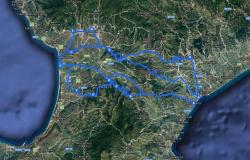Almost three hundred, many people who testified to having been victims of street harassment in Trento in the last 12 months, 294 to be precise, but the total figure is probably even higher. The data comes from the research work done by Michele Balbinot, a student at the University of Trento, for his degree thesis in Law. «I wanted to analyze a phenomenon, that of street harassment, which for 50 years has had a precise name, “street harassment”, but which is rarely studied in a specific city, tracing the phenomenon and imagining specific prevention solutions». The data were collected through a questionnaire distributed through the posting of signs in various areas of the city, “historic center, urban parks and universities”. 489 people responded, it is evidently a sample to be taken with a grain of salt, characterized by the fact that around 70% of the respondents were women and 70% were still in the 18-29 age group, however these are the numbers absolute to make us understand how present and problematic the phenomenon is. «Trento has a problem of street harassment – explains Balbinot – But like all cities have it. This is because these are urban spaces built by men for men and which become hostile territories for the women who live and pass through them.”
The number of harassments
As written, 294 people reported in the questionnaire that they had been victims of street harassment in the last 12 months. «I narrowed the field to the last year so that those who responded would still have a vivid memory of the event» explains Balbinot. Specifically, 258 of these are women, 71% of those who responded to the questionnaire. 127 are between 18 and 23 years old, another 116 are between 24 and 29.
From catcalls to physical violence
The type of harassment suffered is very varied. More than 200 women reported having been subjected to whistles, honks, sexually suggestive looks, gestures or calls (catcalling) and excessive closeness. More than 150 were victims of vulgarity directed at them or saw cars slow down or pull over while they were returning home alone. 85 women reported being touched without consent, 50 of whom said they were followed while returning home. 13 were victims of genital exposure and in 12 homes the abuser made an explicit request for sexual services. Harassers of whom the survey provides a precise identikit: to the answer on the gender of the perpetrator of the harassment, the answer, in 99% of cases or 292 responses, is: “Man”.
The places of street harassment
The research also produced a map of street harassment. «The questionnaire asked to indicate the places, indicated generically as parks, squares or other, where the harassment had occurred – explains Balbinot – But it also left room for open-ended answers». Thus, if the generic answers identified the historic center as a problematic area, the open answers led to a more precise map of the phenomenon. “The historic center is certainly a problem area.” Then there are the parks, in particular that of the Albere, the cycle path along the Adige, the underpass that from via Rosmini passing through the cemetery leads to the Albere, Corso III Novembre, Piazza Santa Maria Maggiore and the area between the train station and that of the courier. «These are areas that have at least one of two characteristics that favor the phenomenon – explains Balbinot – That is, a high influx of people and poor lighting, taking into account that most of the harassment occurs between the evening and night. These two characteristics favor high anonymity, which is an important requirement for crime in general and even more so in the case of harassment for which a few seconds can be enough.”
Prevention and research
If the phenomenon is problematic, the solutions are fundamental. «In the thesis I analyze three types of prevention measures: legal, educational and urban design». The first are the most classic, but they are the responsibility of the legislator “and they do little for prevention”. Education is the path considered most important by those who responded to the questionnaire: 71% believe it is very important to promote education programs for citizenship. «It is certainly the most effective measure, not only to act on harassment itself, but more generally on the idea of respect between genders and combating stereotypes. An education that should begin at school, continue at university and even in the workplace.” Finally there are urban design interventions. «These are forms of situational prevention, which do not act on the criminal, but on the crime and his opportunity. These are actions such as lighting up the city, making it more alive during the night, thus reducing anonymity.” Finally, according to Balbinot, more research is needed: «These phenomena must be studied in their specific dimension. In this way, effective counteraction tools can be identified.”
For Latest Updates Follow us on Google News





